The Westmeath family home of former DCU president Ferdinand von Prondzynski has been placed for sale on the international market seeking €13.5 million. The 19th-century Gothic Revival property on more than 1,000 acres near Mullingar has been owned by the academic's family since his parents left their home in Germany and settled at the Westmeath parkland estate in 1961.
Knockdrin Castle appeared for sale in recent weeks on American and UK websites through selling agent David Ashmore of Ireland Sotheby's International Realty. Mr Ashmore declined to comment except to say the focus of the sale is currently fixed on the international market, and the plan is to market the property within Ireland next spring.
Mr von Prondzynski, who is currently principal and vice-chancellor of Robert Gordon University in Aberdeen, Scotland, also declined to comment when contacted by The Irish Times.
Prior to taking up his role in Scotland in 2011, Mr von Prondzynski was the high profile and at times outspoken second president of Dublin City University (DCU) from 2000-2010.
A direct descendent of a 19th-century Prussian general of the same name, Mr von Prondzynski’s father, Hans, served as a captain in the German army during the second World War.
After the war he joined the family cement business but later moved to Ireland with his wife Irene Countess Grote, Ferdinand and his two sisters because their ancestral home had suffered war damage.
After several years farming in Ireland Hans returned to Germany, though they retained the estate. In 1982, he retired back to Knockdrin and died in 1998. Irene von Prondzynski continued to live there until her death earlier this year.
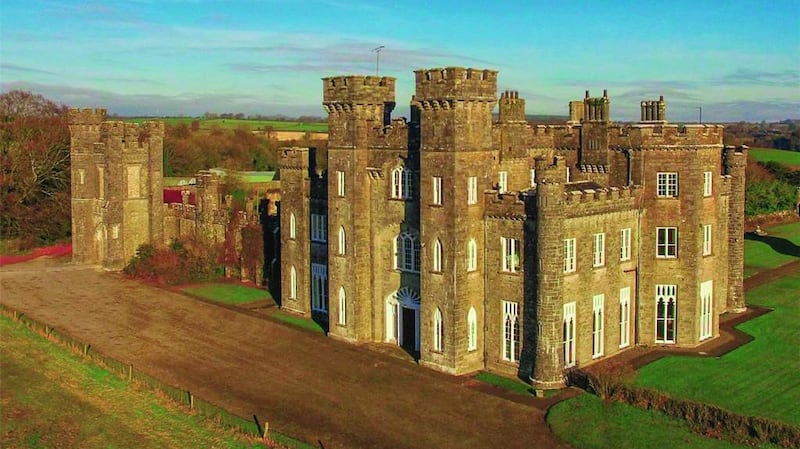
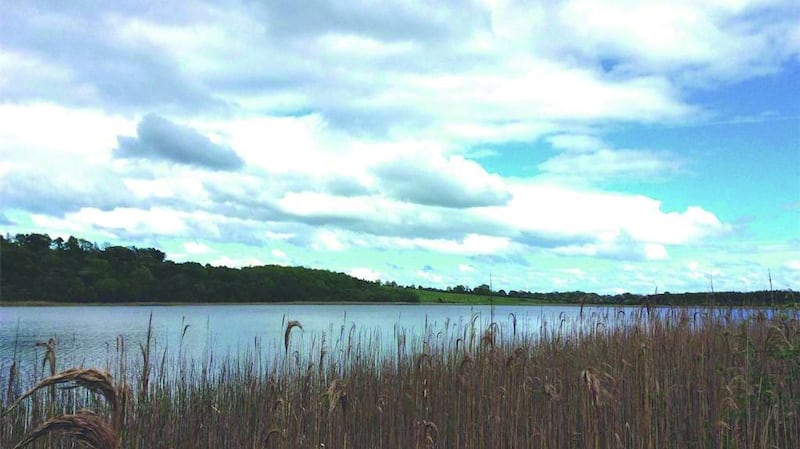
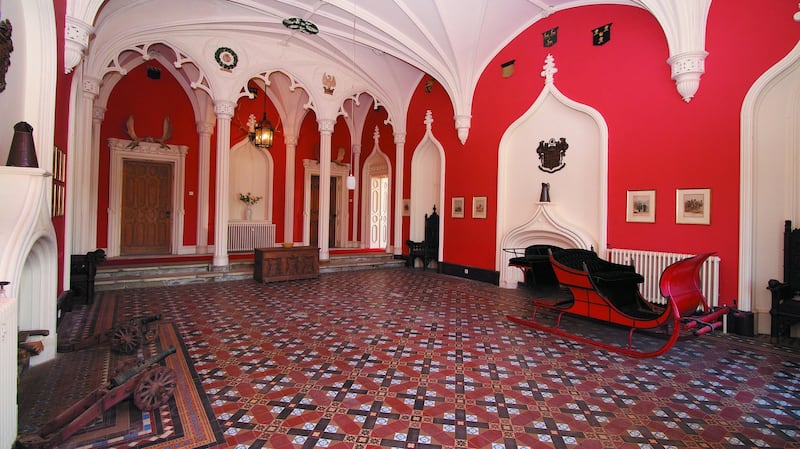
In its 200-year history, the von Prondzynskis are only the third family to have lived at Knockdrin. Westmeath’s lakelands may have their share of historic homes, including Belvedere House, Tullynally Castle and Charleville Castle, but Knockdrin is a lesser-known example. The original Norman castle residence was built by the Levinge family after they were rewarded in 1704 with the land for their efforts in the Williamite wars (ousting the Catholic Tuite family from the lands in the process). It was later destroyed by fire.
Gothic Revival
Sir Richard Levinge, then Lord Lieutenant of Westmeath, is believed to have commissioned Sir Richard Morrison in the early 1800s in keeping with trends of the day to design his new Gothic Revival-style castle. The designs were never built and the current structure is credited to James Shiel, assistant to Francis Johnston, one of Ireland's best known Gothic Revival architects. His work includes Charleville Castle in Co Offaly, although elements of the front facade have been attributed to Morrison's design.
It has been speculated that the central building may originally have been an 18th-century house reworked in the Gothic style by Shiel. In his assessment of the 1,800sq m (19,375sq ft) property, Robert O’Byrne, writer and decorative arts historian, describes Knockdrin Castle as really “a Georgian country house in fancy dress”. The rooms retain the proportions, sash windows and light-filled design of the Georgian period, while the Gothic references are mainly decorative and superficial. This gives the property the best of both worlds – none of the thick battlements, narrow window slits and fortified turrets associated with dark Gothic properties, but all of the flouncy embellishment of that period celebrated in elaborate plasterwork, pointed arches and clustered columns.
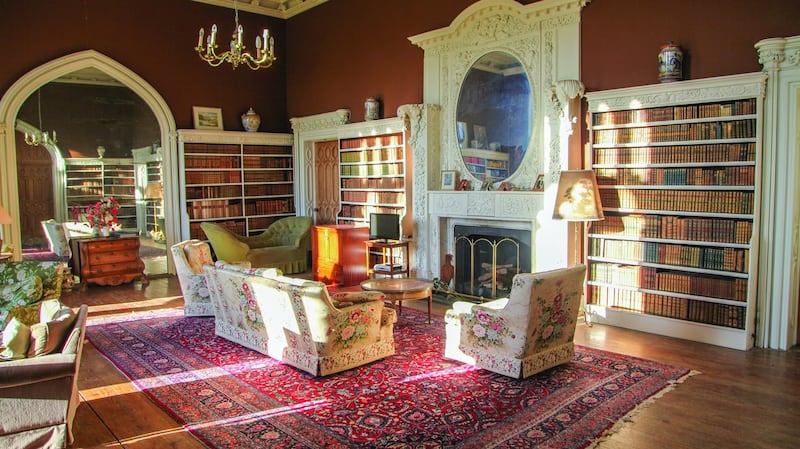
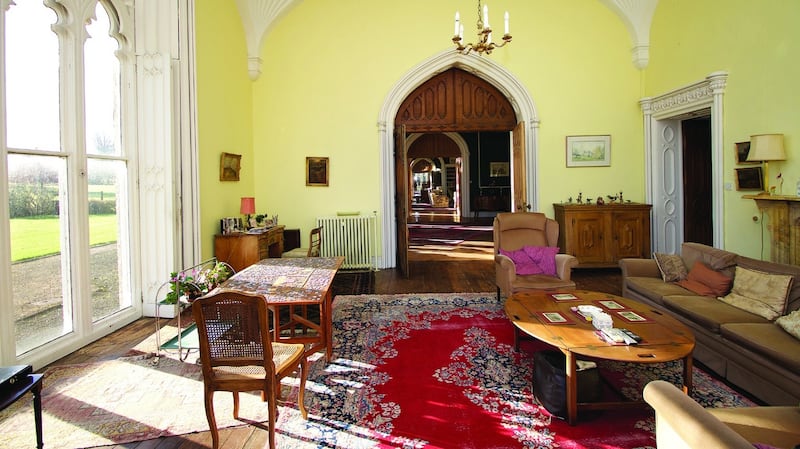
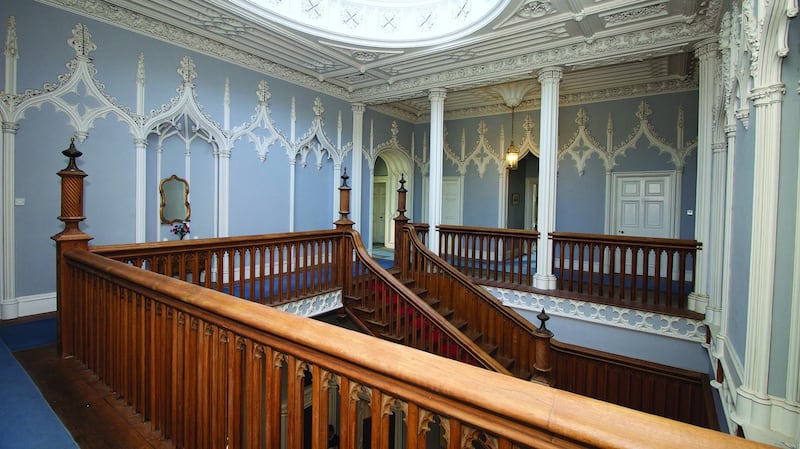
A highlight off the main hall is a very fine ornate top-lit staircase of carved oak. The gallery landing is decorated with what O’Byrne describes as “fluted shafts and ogee-headed niches around the walls” and topped with a central glazed dome that throws light downwards.
Winston Churchill
The reception rooms include a vast main hall, drawingroom, diningroom, the one-time ballroom currently used as an office, and the library. There are seven bedrooms upstairs including one known as the Crown Bedroom where British prime minister Sir Winston Churchill stayed during the War of Independence.
His parents were regular hunting visitors to the estate as guests of the Levinge's who retained the property in the family for more than 100 years. Jennie Churchill is reputed to have said that the foxes at Knockdrin "were as wild as the locals".
After the second World War it was sold to an Irish actor, Paddy Dunne-Cullinan who lived there for 17 years before selling to the von Prondzynskis.
Located within about 1½ hours of Dublin, the estate sits on 1,140 acres, 600 of which are arable land currently under lease, while another 415 acres are set in woodland. The remaining acreage is accounted for by lakes, gardens and lawns.
Recent coverage of the Knockdrin sale on Bloomberg noted: "While the house isn't in pristine condition, its current air is that of a grand, well-lived in mansion. Still, with even minor updates to bathrooms and living areas, owners will be able to put their own touches on the property quite easily. Moreover, potential buyers will be pleased to discover that, as part of the sales price, the owners will include the home's fitted carpets and curtains."
Knockdrin is for sale through Ireland Sotheby’s International Realty for €13.5 million.











